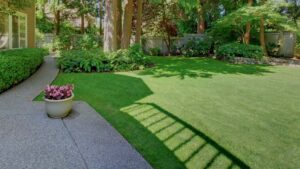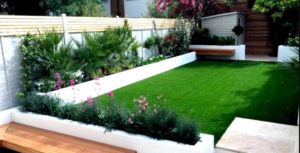Whenever we fail to grow our favorite plants and flowers, we blame it on the fertilizers or the soil – often overlooking the suitability of the location and its contributing factors.
Indeed, landscaping zones play a significant role in deciding whether you will have a beautiful green yard or barren land.
Landscaping zones are distinctive geographical areas with different climate conditions. These conditions decide whether plants will thrive in that particular area or not. This is why you will find certain kinds of plants, flowers, and food grow best in particular areas only.
If you want to know about the list of plants that are most suitable for growing in the Rochester landscape zone, give a call to the best landscaping company in Rochester – Gorski Landscaping today!
But in case you are interested in knowing more about how and why landscaping zones matter so much, then keep on reading.
What Are Landscaping Or Hardiness Zones?
The landscaping zone map was created to help gardeners across the US identify which plants will thrive in their area. It is updated every few years by the U.S. Department of Agriculture (USDA) on the basis of the historical temperature data. The USDA plant hardiness map divides the country into 13 hardiness zones ranging from 13 (warmest) to 1 (coldest). These zones are subdivided and tagged with “A” and “B” to provide greater accuracy.
For example, a gardener who resides in hardiness zone 6b can quickly put a plant variety that has been rated hardy to zone 5 but should avoid the variety that is rated hardy to zone 7, as the zone 7 plants will die in harsh winters of that area.
However, there are some factors that the USDA zones don’t include, which can lead to inaccuracies for your exact location.
Limitations
Even though there is a standard map followed by most gardeners to determine which plants and flowers they should plant in their area – there are a lot of other factors that are not considered in marking the hardiness zones. Some of them are freeze-thaw cycles, precipitation, elevation, the effect of snow cover, etc.
Every particular location has its own microclimate. Things such as pH levels, ground slope, wind and sun exposure, and soil moisture can greatly affect the plant’s ability to thrive. Even though the temperature will be suitable, the plant can still die if you don’t focus on the above-mentioned things.
Microclimates
Along with the landscaping zone, you would also need to have good awareness about your location. It is often possible that two places in the same zone aren’t compatible with the same plant varieties. For example, coastal Seattle and dry Tucson both have zone 8, but the plants that grow in Tucson won’t thrive in Seattle. The reason is that they may have comparable weather temperatures, other environmental factors are way different at both places.
So, What To Do?
Knowing about the landscaping or hardiness zones can easily help you create a list of plants that could thrive in your area. But to get the best results, it would be great if you got advice from an expert landscaping company near you.
Residents of Rochester can call on 716 380 0680 and get answers to all their landscaping and lawn care questions.





